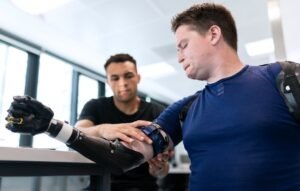Can AI Detection Tools Be Wrong?
Artificial Intelligence (AI) detection tools have become increasingly popular for various applications, from identifying spam emails to detecting fraud. However, like any technology, they are not infallible and can make mistakes. It is important to understand the potential limitations and risks associated with relying solely on AI detection tools.
Key Takeaways:
- AI detection tools are powerful but not perfect.
- The accuracy of AI detection tools depends on various factors.
- Human oversight and validation are crucial in ensuring the reliability of AI detection results.
One interesting aspect of AI detection tools is their ability to analyze vast amounts of data quickly and efficiently. They employ complex algorithms and machine learning techniques to recognize patterns and make predictions based on existing data. However, this does not guarantee 100% accuracy. AI detection tools can still produce false positives or false negatives, leading to incorrect results.
There are several factors that can contribute to the errors made by AI detection tools. One primary factor is the quality and quantity of training data used to train the AI model. Insufficient or biased data can lead to inaccurate results. Additionally, the algorithm itself and its complexity can influence the accuracy. Some algorithms may be better suited for certain types of detection tasks than others, and the choice of algorithm can impact the overall performance of the AI tool.
Another critical consideration is the level of human oversight and validation. While AI detection tools can automate the process and detect patterns that humans may overlook, human experts should still review and verify the results. They can provide context, interpret complex scenarios, and ensure the accuracy of the AI-generated detections. Human involvement is necessary to prevent false positives or negatives that could have significant consequences.
Common Errors in AI Detection Tools
One common error in AI detection tools is the occurrence of false positives, where something is incorrectly identified as a positive result. This can lead to unnecessary actions or false accusations. On the other hand, false negatives occur when something should have been detected as a positive result but is missed by the AI tool. These errors can have serious consequences, particularly in critical domains such as healthcare or security.
Table 1 illustrates the potential consequences of false positives and false negatives in different scenarios:
| Industry | Consequence of False Positives | Consequence of False Negatives |
|---|---|---|
| Healthcare | Unnecessary treatments, anxiety for patients | Missed diagnoses, delayed treatment |
| E-commerce | Wrongly blocking legitimate orders | Failure to detect fraudulent transactions |
| Security | False alarms, wasting resources | Failure to detect actual threats |
To mitigate the potential errors of AI detection tools, a combination of approaches can be implemented:
- Ensuring high-quality training data
- Using a robust algorithm suitable for the specific task
- Implementing human review and validation
- Regularly updating and fine-tuning the AI model
- Monitoring and collecting feedback on the tool’s performance
It is important to understand that AI detection tools are only as reliable as the data and methods used to develop them. By acknowledging their limitations and implementing appropriate safeguards, organizations can maximize accuracy and minimize the risk of erroneous results.
Conclusion:
While AI detection tools can be powerful and efficient, they are not infallible. Human oversight, validation, and continuous improvement are essential for ensuring the reliability and accuracy of AI-generated detections. By understanding the potential errors and taking proactive measures to mitigate them, AI detection tools can be valuable assets in various industries and applications.

Common Misconceptions
AI Detection Tools are Always Accurate
One common misconception surrounding AI detection tools is that they are always accurate. While these tools are designed to be highly reliable, they are not infallible. There are several factors that can contribute to inaccuracies in AI detection, such as data biases, limitations in the training data, and the complexity of the tasks they are intended to perform.
- AI detection tools may have biases based on the data they were trained on.
- The training data itself may not be representative of all possible scenarios.
- The complexity of the detection task can impact the accuracy of the tool.
AI Detection Tools Are Completely Objective
Another misconception is that AI detection tools are completely objective. While AI systems are designed to be impartial and make decisions based on data, they can still be influenced by biases, both in the underlying data and in the algorithms themselves. Human biases can also creep into the training process and affect the way these tools make decisions.
- Biases in the training data can lead to biased outcomes.
- Algorithmic biases can also impact the objectivity of AI detection tools.
- Human biases in the training process can affect the tool’s decision-making.
AI Detection Tools Are Always Better Than Human Judgment
Contrary to popular belief, AI detection tools are not always superior to human judgment. While these tools can process large amounts of data more quickly and consistently than humans, they may lack the contextual understanding and nuanced reasoning capabilities that humans possess. In certain situations, human judgment and critical thinking can outperform AI detection tools.
- AI tools may not have the same level of contextual understanding as humans.
- Human judgment can be better at capturing nuance and making informed decisions.
- AI tools may struggle with tasks that require complex reasoning or deep domain knowledge.
AI Detection Tools Do Not Need Constant Monitoring
Some people mistakenly believe that once an AI detection tool is implemented, it can run autonomously without the need for constant monitoring. However, AI tools should be regularly monitored and evaluated to ensure their ongoing effectiveness and accuracy. Changes in the data they process or the environment in which they operate can impact their performance.
- Monitoring is necessary to detect and correct potential biases or inaccuracies.
- Regular evaluation helps maintain the tool’s relevance and effectiveness.
- Changes in the data or environment can impact the tool’s performance over time.
AI Detection Tools Will Replace Human Judgment
Lastly, there is a misconception that AI detection tools will completely replace human judgment. While these tools can augment and enhance human decision-making processes, they are not intended to replace human judgment entirely. Human oversight, critical thinking, and ethical considerations are still essential in evaluating the outcomes of AI detection tools and making final decisions.
- AI tools should be seen as tools to support human decision-making, not complete substitutes.
- Human oversight is necessary to ensure the tool’s outputs align with ethical standards.
- Complex and high-stakes decisions often require a combination of AI tools and human judgment.

Can AI Detection Tools Be Wrong?
Artificial intelligence (AI) detection tools have become increasingly prevalent in various industries, offering a wide array of benefits. However, it is essential to keep in mind that, just like any technology, AI tools are not infallible. This article explores ten scenarios where AI detection tools may produce erroneous results, emphasizing the importance of human intervention in assessing their output.
Identifying Emotional State
Despite advancements in emotion recognition technology, AI tools may still struggle to accurately interpret complex emotional states exhibited by individuals in certain situations.
| Scenario | AI Detection Result | Actual Emotional State |
|---|---|---|
| Analyzing a painting | Neutral | Deep melancholy |
| Interpreting a sarcastic comment | Positive | Negative |
| Assessing a bluff in poker | No emotion detected | Hesitation and nervousness |
Detecting Fake News
AI-powered fact-checking tools have made significant strides in identifying fake news; however, there are instances where they may be susceptible to manipulation or unable to discern subtle nuances.
| Scenario | AI Detection Result | Actual News Authenticity |
|---|---|---|
| A controversial news headline | False | True |
| A subtly manufactured news article | True | False |
| A satirical news piece | True | Nonfactual, satirical |
Recognizing Objects
Object recognition is a fundamental capability of AI systems; nevertheless, certain circumstances can lead to misidentification.
| Scenario | AI Detection Result | Actual Object |
|---|---|---|
| Identifying a cat breed | Persian | Maine Coon |
| Classifying a tropical fruit | Pineapple | Jackfruit |
| Labeling a dog breed | Husky | Alaskan Malamute |
Speech-to-Text Accuracy
Speech recognition technology has improved significantly; nonetheless, it may falter when confronted with certain accents, background noise, or technical limitations.
| Scenario | AI Detection Result | Actual Spoken Text |
|---|---|---|
| Transcribing a Scottish accent | May aspects drove her crazy | Many aspects drove her crazy |
| Interpreting a noisy conversation | Urgent surgery is required | Ergent surgery is required |
| Transcribing technical jargon | Insult incident | Insult to injury |
Autonomous Vehicle Decision-Making
Self-driving cars rely heavily on AI algorithms to make split-second decisions. However, certain scenarios may pose challenges for decision-making algorithms.
| Scenario | AI Detection Result | Actual Course of Action |
|---|---|---|
| Avoiding a sudden bicyclist | Continue straight | Swerve to the right |
| Identifying a reflective surface as a solid object | Brake abruptly | Maintain speed |
| Distinguishing between a real person and a mannequin | Stop vehicle | Continue driving |
While AI detection tools have demonstrated considerable potential, it is important to acknowledge their limitations. Through careful collaboration between humans and AI, we can strive to achieve more accurate and reliable detection systems.





